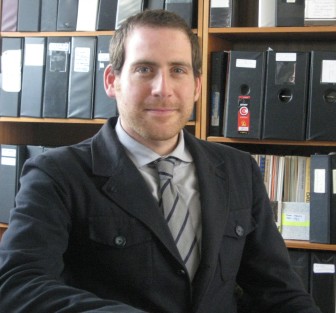 On December 14, 2012 Adam Lanza killed 20 children and six adults at Sandy Hook Elementary School in Newtown, Conn. Six months later, this incident remains seared in the nation’s consciousness. The tragedy at Sandy Hook joined the unfortunate list of other school shootings, like those at Virginia Tech and Columbine High School.
On December 14, 2012 Adam Lanza killed 20 children and six adults at Sandy Hook Elementary School in Newtown, Conn. Six months later, this incident remains seared in the nation’s consciousness. The tragedy at Sandy Hook joined the unfortunate list of other school shootings, like those at Virginia Tech and Columbine High School.
As Americans struggled to make sense of the tragedy, advocacy groups and policymakers in all levels of government developed political solutions they thought necessary to prevent this from happening again.
At the Newtown memorial service, President Barack Obama declared he would “use whatever power this office holds” to prevent future school shootings. While much of the national political conversation centered on gun control policy, there were also calls to increase the role of law enforcement on campuses. The National Rifle Association’s Executive Vice President, Wayne LaPierre, called for, “whatever is necessary to put armed police officers in every single school.”
Given this political response, the shooting at Sandy Hook may unintentionally result in policies that exacerbate the “school-to-prison-pipeline,” where at-risk students move out of our educational system and into the juvenile justice system. Six months after the 1999 school shooting at Columbine High School, John Cloud reflected in Time Magazine on the “Columbine effect,” as widespread fear led to an over reliance on zero-tolerance school discipline policies. The Sandy Hook tragedy could potentially lead states to adopt even more strident policies and repeat this unfortunate phenomenon.
Not only are these policies excessively punitive, they also have a disproportionate impact on students of color. Recently, the U.S. Department of Education released data from a survey of 75,000 schools, finding that while African American students were only 18 percent of the sample, they made up 35 percent of those subject to one suspension and 39 percent of expulsions. The Civil Rights Project confirmed this data with the April 2013 report that found that in 2009-10 more than 2 million students received suspensions, the majority of which were for minor violations. Moreover, the report reveals a disturbing pattern on race and disability, as “36 percent of all black male students with disabilities enrolled in middle schools and high schools were suspended at least once in 2009-2010.” A 2011 Texas studyfound that these disciplinary measures increase a student’s subsequent involvement in the juvenile justice system.
Some researchers have also found that increasing the number of police on school campuses may exacerbate existing challenges for students of color. The Justice Policy Institute (JPI) has detailed in a 2011 report the potential dangers of expanding law enforcement or school resource officers on school campuses. JPI argued that such officers not only have a limited impact on school safety, but may lead to an over reliance on the juvenile justice system for addressing discipline issues.
Policymakers and advocates in California are working to not only close the school-to-prison pipeline, but also to serve our high-needs youth. Earlier this month, the California State Assembly Select Committee on the State of Boys and Men of Color organized a briefing in the state capitol to discuss these developments in the wake of Sandy Hook. The subsequent conversation on education and juvenile justice drew upon a variety of voices, which included students, researchers, advocates and policymakers. A consistent theme throughout the briefing was a need for thoughtful, culturally competent school discipline policies along with increased resources for school mental health counselors.
Moreover, California is currently developing a number of policies relating to issues facing students of color. One such policy is Assembly Bill 420 authored by Assemblymember Roger Dickinson, which seeks to significantly reduce the number of student suspensions for “willful defiance,” a highly subjective offense responsible for the majority of suspensions.
Additionally, Assembly Bill 174 by Assemblymemer Rob Bonta would provide resources to school mental health programs, for youth who have experienced the effects of trauma and violence. Both AB 420 and AB 174 represent steps to protect students from overly punitive policies, while giving them the resources to overcome potential mental health issues.
Both in California and across the country, there is a growing awareness that school safety policies must be balanced with concerns of criminalizing student misbehavior and expanding the school-to-prison-pipeline.
School administrators and state policymakers must consider these long-term implications, otherwise they risk continuing failed punitive measures that neither educate students nor keep them safe. Instead, these policies will continue to have a negative and disproportionate impact on students of color and potentially lead them into the juvenile justice system, rather than on a path for future success.
Brian Goldstein is a Policy Analyst with the Center on Juvenile and Criminal Justice (CJCJ)






























